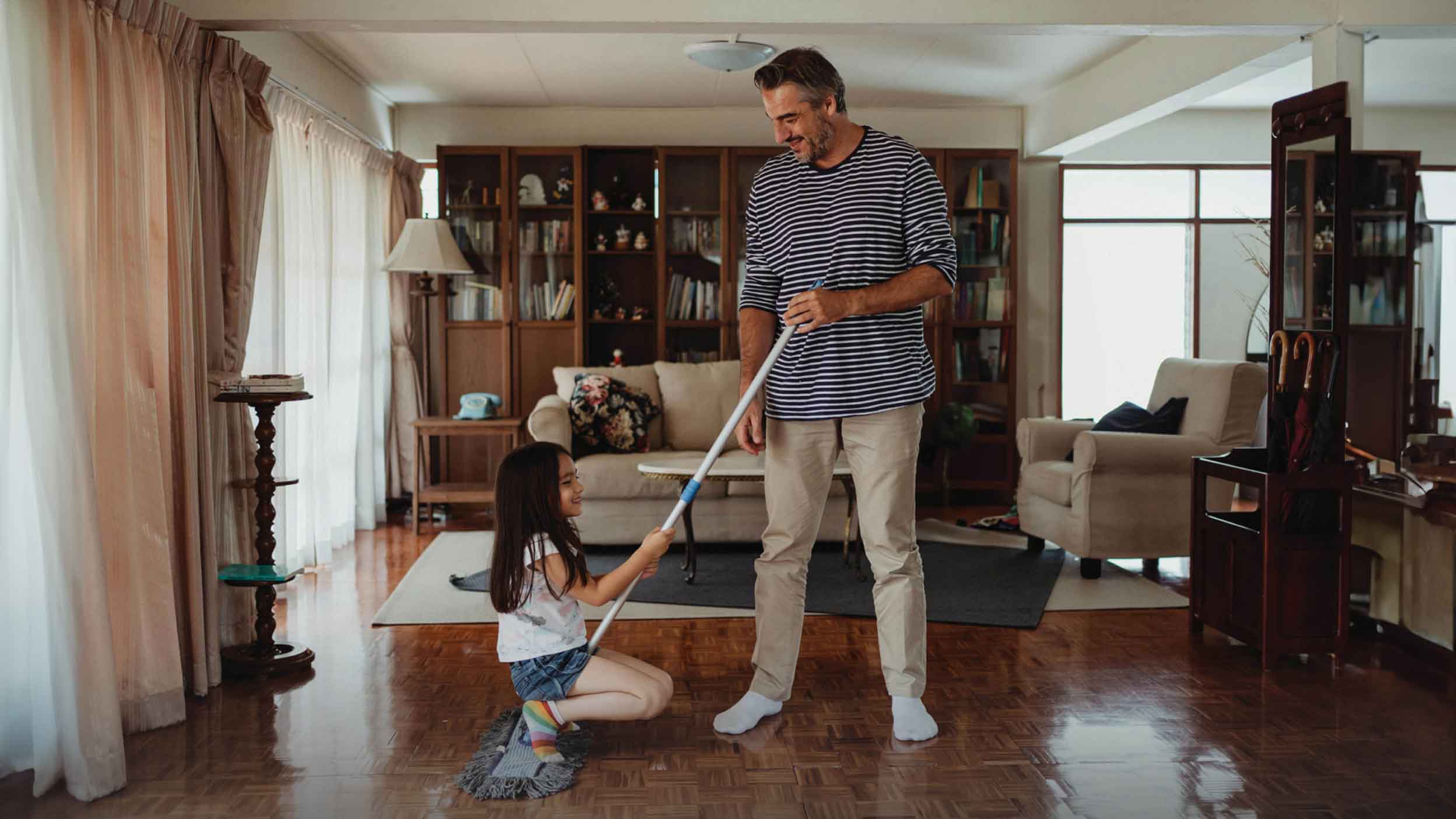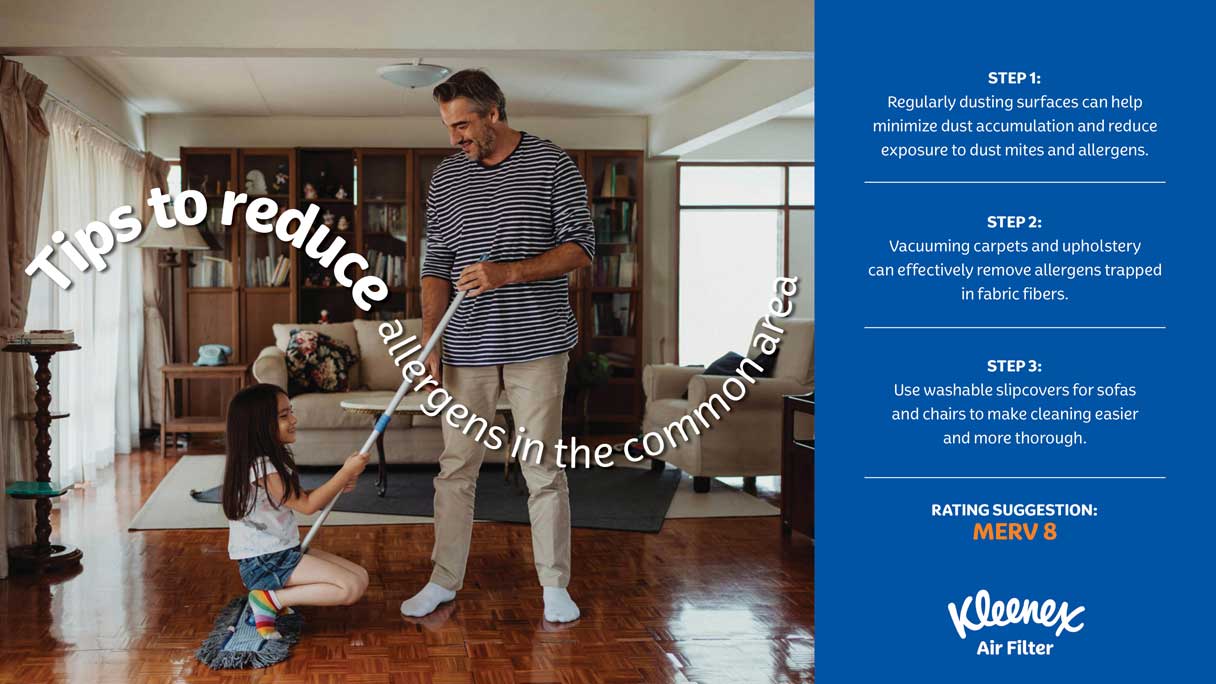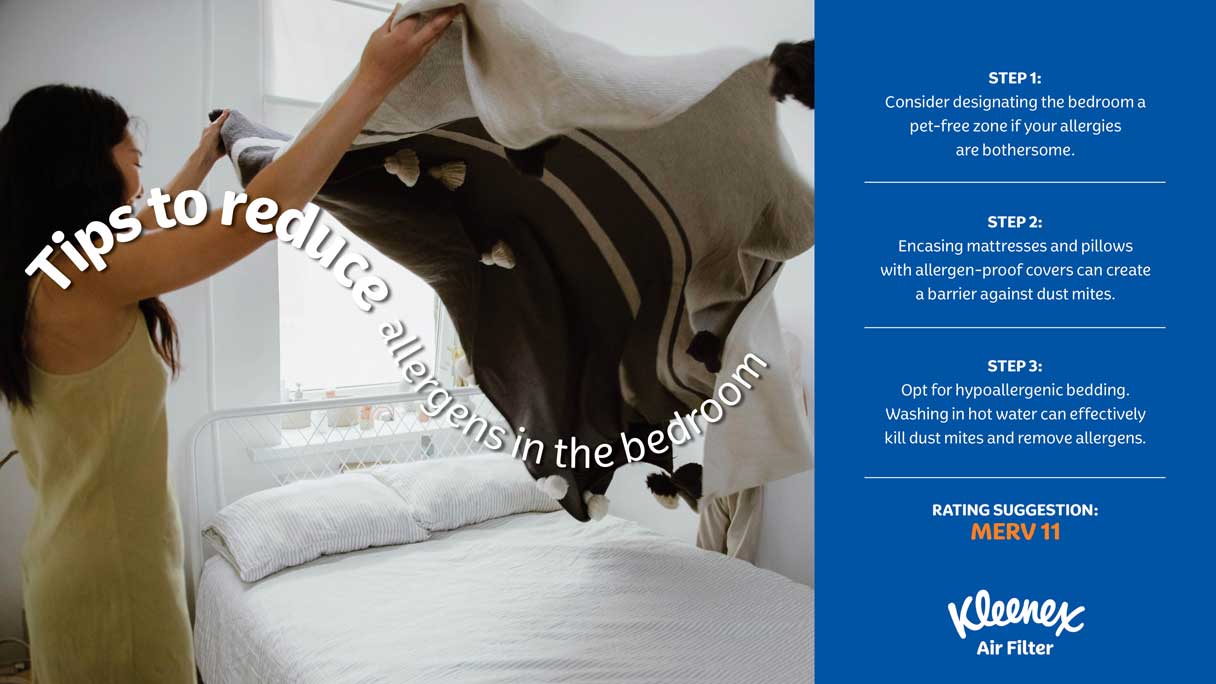
Are you bothered by constantly sneezing or dealing with watery, itchy eyes? With most of our time spent at home, it’s important to consider how indoor air quality can impact our health.
You settle into your home after a long day, but instead of finding comfort, you are faced with indoor allergies. This is all too common, yet the culprit often goes unnoticed – the very air within our homes. Allergens and other contaminants can be harmful to our respiratory systems, making our homes feel less like the sanctuaries they deserve to be.
But don’t despair! Read on as we uncover how to improve air quality in home, more about these symptoms, and how to clean and care for the air in your home using Kleenex Air Filters.
Understanding Indoor Air Quality
Having good indoor air quality is important to make people feel comfortable and productive. When the air is clean it can help boost wellbeing and comfort. On the other hand, if the indoor air quality of a particular space degrades, it leads to discomfort and fatigue. This may also negatively affect your mood and cognitive function
All About Indoor Air Pollutants
Allergens & Asthma Triggers
Particles such as lint, household dust, dust mite debris, smog, pollen, pet dander, smoke, and mold spores can aggravate allergies. These tiny particles stay in enclosed spaces with limited ventilation and high moisture levels. When disturbed, they can become suspended in the air with relative ease. This can lead to uncomfortable allergic reactions for those who are sensitive.Combustion Pollutants
Combustion appliances release harmful pollutants such as carbon monoxide, nitrogen dioxide, and particulate matter. Such appliances include gas stoves, furnaces, and fireplaces. Breathing in these pollutants over a prolonged period can lead to severe respiratory issues, cardiovascular problems, and other negative health outcomes.Volatile Organic Compounds (VOCs)
Many household items such as paints, cleaning products, and building materials release harmful chemicals into the air. Known as VOCs, they contribute largely to indoor air pollution. The associated health risks may include headaches, dizziness, and eye irritation. These symptoms tend to show up after using cleaning products or during a home renovation.Mold
Mold is a microscopic fungus that grows in warm and humid areas. There are specific environments within a household where you might see mold growth such as the bathroom, kitchen, and basement. They release copious amounts of spores into the air and land on wet surfaces. Inhaling these mold spores can trigger unappealing allergic reactions and aggravate respiratory conditions such as asthma. In some cases, it may even cause skin irritations such as dermatitis.Dust
Household dust can come from many sources. Dust is a mixture of particles, composed mainly of skin cells, pet dander, pollen, and dirt from the outside. They gather on surfaces and become airborne with relative ease. Dust mites are microscopic organisms that leave behind their droppings within clumps of dust called dust mite debris. Breathing in these dust particles can trigger allergic reactions and further respiratory symptoms in sensitive people.Pet Dander
Pet dander is another common indoor allergen, especially for those who have allergies to furry animals such as dogs and cats. Proteins found in the skin cells, saliva, and urine of certain animals can trigger allergic reactions when inhaled. Even homes without pets can have pet dander, as these allergens can latch on to clothing and shoes.Symptoms of Allergies at Home
These include:
- Countless and uncontrollable sneezing is the most dominant symptom of household allergies, triggered by an exposure to dust build-up.
- Itchy eyes are also a common reaction to airborne allergens, leading to redness and excessive watery eyes.
- A stuffy nose is another common symptom of indoor allergies. Nasal congestion occurs in response to your body recognizing foreign allergens by producing excess mucus.
- Conversely, some may experience a runny nose due to allergens, resulting in nasal discharge or irritation.
- Stubborn coughing may also occur as your body attempts to get rid of irritants from the respiratory system.
- In more severe cases, indoor air pollution can lead to wheezing, especially in people with underlying respiratory issues such as asthma.
- Skin allergy symptoms may include rashes, raised bumps, swelling, and dermatitis. Severe symptoms can lead to long-term scarring and damage to the surface of your skin.
How to Remove Allergens from the Home
Reduce Allergens in the Common Area
Regularly dusting surfaces such as coffee tables, shelves, and entertainment centers can help minimize dust accumulation and reduce exposure to dust mite debris and other particulates and allergens. Vacuuming carpets and upholstery with a HEPA-filtered vacuum cleaner can effectively remove allergens trapped in fabric fibers. Consider using washable slipcovers for sofas and chairs to make cleaning easier and more thorough.

Reduce Allergens in the Bedroom
Encasing mattresses and pillows with allergen-proof covers creates a barrier against dust mites and dust mite debris, promoting better sleep for allergy sufferers. Washing bedding in hot water can also effectively kill dust mites and remove allergens.Using hypoallergenic bedding made from materials such as bamboo can further reduce allergen exposure. Designating the bedroom to be a pet-free zone can also help if your indoor allergies are bothersome.

Reduce Allergens in the Kitchen
Maintaining a clean and allergen-free kitchen is essential for food safety and minimizing exposure to mold. Regularly cleaning countertops and appliances with soap can help prevent the growth of mold and bacteria.Pay special attention to areas prone to moisture, such as around sinks and faucets. Also, consider storing food in airtight containers to prevent cross-contamination and reduce the risk of exposure to food allergens. Using exhaust fans when cooking can also help to remove odors and airborne particles from the kitchen.

Cleaning Your Air with Air Purifiers and Air Filters
This prevents debris from accumulating within your internal HVAC system. Air filters are a relatively inexpensive method to help ensure your system remains free from severe build-up and damage.
Air purifiers, on the other hand, are sophisticated home devices that cleanse the air by trapping and removing smaller contaminants. They are made up of numerous filtration technologies, such as HEPA filters, activated carbon filters, UV-C light, or ionizers. These filters can remove up to 99.97% of particles as small as 0.3 microns in size, making them highly efficient in getting rid of indoor allergies.
Stop Air Pollutants in their Tracks with Kleenex Air Filters
Whether you are dealing with seasonal allergies or looking for ways to reduce everyday irritants, Kleenex Air Filters are designed to meet your needs. Available in a range of MERV ratings from 8-13, these air filters are highly effective at capturing a variety of airborne particles. This includes lint, household dust, dust mite debris, smog, and pollen. Kleenex Air Filters actively work to trap and eliminate these pollutants to clean the air in your home so you can feel confident with each breath you take.
Among the lineup of Kleenex Air Filters, the Elite Allergen stands out in terms of its performance with a MERV 13 rating. Engineered with state-of-the-art filtration technology, this powerhouse captures the smallest particles with precision. From pollen to pet dander, mold spores to bacteria, no pollutant would be able to escape the grasp of the Kleenex Elite Allergen air filter.




.webp?rev=-1)
.webp?rev=-1)
.webp?rev=-1)

